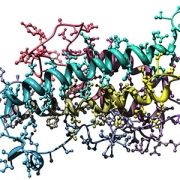Promising results after precision medicine trial for growth hormone resistance

A patient with short stature and growth hormone (GH) resistance experienced a growth rate increase of 3.4 cm/year after 12 months of high-dose GH therapy.
In a first-of-its-kind single-patient clinical trial, a patient with short stature and growth hormone (GH) resistance experienced a growth rate increase of 3.4 cm/year after 12 months of high-dose GH therapy as part of a precision medicine approach. The study, led by Andrew Dauber, M.D., M.M.Sc., chief of Endocrinology at Children’s National Hospital, was published in The Journal of Clinical Endocrinology & Metabolism.
What this means
“Many patients with short stature do not get a definitive genetic diagnosis, and even if they do, it takes substantial effort to design a targeted therapeutic trial,” says Dr. Dauber.
This is the first trial of extremely high-dose growth hormone in a single patient with a unique form of growth hormone resistance.
Children’s National leads the way
During an endocrine evaluation for short stature, which included GH stimulation testing demonstrating growth hormone resistance, a next-generation sequencing panel revealed that the patient had an inherited heterozygous frameshift variant in the growth hormone receptor gene (GHR).
The researchers found that the patient’s growth hormone binding protein (GHBP) levels were elevated because of this variant, limiting circulating GH’s ability to bind to the GH receptor. The researchers believed that, with extremely high doses of GH, the mechanism of resistance would be overcome and normal GH signaling would be restored.
“We found that we were able to overcome the patient’s growth hormone resistance, which resulted in substantially improved growth,” says Dr. Dauber. “Our understanding of the underlying pathophysiology of his growth disorder led to our ability to design a precision medicine trial just for this single patient.”
Genetic testing and translational biology can provide insights into the specific underlying mechanism of rare growth disorders, allowing for precision medicine approaches.










